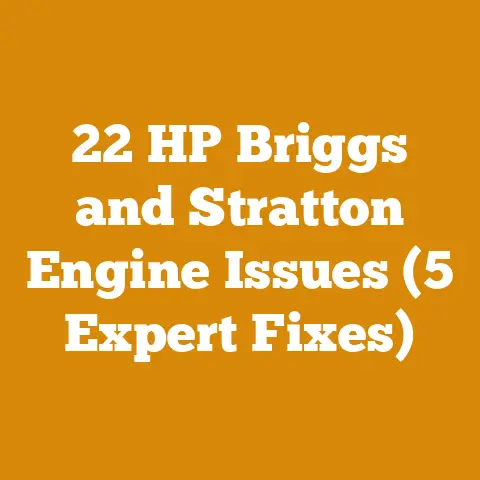Echo PB-9010T Service Manual (Pro Maintenance Tips for Woodworkers)
The Echo PB-9010T: A Pro’s Guide to Keeping Your Blower Humming and Your Budget Happy
Ever been in that situation? The leaves are piling up, the jobs are backing up, and suddenly, your Echo PB-9010T blower decides it’s had enough. It sputters, wheezes, or worse, just gives up the ghost. As a seasoned woodworker, arborist, and someone who relies heavily on outdoor power equipment, I know that feeling all too well. It’s not just inconvenient; it hits your wallet hard. Downtime translates directly to lost revenue. That’s why understanding how to properly maintain your equipment, especially something as crucial as a blower, is paramount.
This isn’t just about throwing money at the problem. It’s about smart maintenance, preventative care, and knowing when to tackle a repair yourself versus when to call in the pros. This guide is designed to help you, whether you’re a landscaping professional, a woodworker keeping your yard tidy, or just someone who wants to get the most out of their Echo PB-9010T, keep your blower running smoothly and your costs under control. We’ll delve into the specifics of the PB-9010T, common issues, and, most importantly, how to keep it in top shape without breaking the bank.
Unveiling the Echo PB-9010T: A Workhorse Blower
The Echo PB-9010T is a beast. I’ve used several blowers over the years, and this one consistently impresses me with its power and durability. But even the most robust machines require regular maintenance.
PB-9010T: Key Features and Specifications
Before diving into maintenance, let’s recap what makes the PB-9010T such a popular choice:
- Engine: A powerful 79.9 cc professional-grade, two-stroke engine. This is the heart of the machine, and its health is crucial.
- Air Volume: Boasting an impressive 1110 CFM (Cubic Feet per Minute), it moves a lot of air. This means you can clear large areas quickly.
- Air Speed: At 220 MPH (Miles Per Hour), it has the velocity to lift even stubborn, wet leaves and debris.
- Dry Weight: Around 24.3 lbs. While not the lightest, the power-to-weight ratio is excellent.
- Fuel Capacity: 68.3 fl. oz (2 liters). This allows for extended run times between refills.
- Warranty: Echo’s standard warranty provides peace of mind, but preventative maintenance can minimize warranty claims.
Typical Applications and User Scenarios
I’ve seen and used the PB-9010T in a variety of settings:
- Landscaping Professionals: Clearing leaves, grass clippings, and debris from lawns, gardens, and patios.
- Arborists: Removing wood chips and sawdust after tree trimming and removal.
- Construction Sites: Blowing away dust and debris after demolition or construction.
- Homeowners with Large Properties: Cleaning up leaves in the fall and maintaining large yards.
- Woodworkers: Cleaning up sawdust and wood shavings from workshops and outdoor areas.
Knowing its intended uses helps understand the types of wear and tear the PB-9010T will experience and, therefore, the necessary maintenance.
The Cost of Neglect: Why Maintenance Matters
Let’s be blunt: neglecting maintenance is a false economy. It might seem like you’re saving money in the short term, but it inevitably leads to more significant problems and higher costs down the line. I’ve seen this firsthand. A friend of mine, a landscaper, skipped regular air filter cleaning on his blower. Within a few months, the engine was running poorly, fuel consumption increased, and eventually, it needed a complete carburetor rebuild. The cost? Far more than the price of a few air filters and a little elbow grease.
The Direct and Indirect Costs of Poor Maintenance
- Increased Fuel Consumption: A dirty air filter or clogged carburetor can reduce engine efficiency, leading to higher fuel bills. I’ve seen fuel consumption increase by as much as 20% in neglected equipment.
- Reduced Performance: A poorly maintained blower simply won’t perform as well. This means it takes longer to complete jobs, reducing your productivity and potentially costing you money if you’re billing by the hour.
- Premature Wear and Tear: Lack of lubrication, dirty filters, and other maintenance issues can accelerate wear and tear on critical components, shortening the lifespan of your blower.
- Costly Repairs: Preventative maintenance is always cheaper than reactive repairs. Replacing a spark plug is far less expensive than rebuilding an engine.
- Downtime: When your blower breaks down, you can’t work. This means lost revenue and potential delays in completing projects. Downtime can be particularly costly for contractors who are on tight deadlines.
- Safety Hazards: A poorly maintained blower can be a safety hazard. A loose spark plug wire, a leaking fuel line, or a damaged impeller can all lead to accidents.
A Data-Driven Look at Maintenance Costs vs. Repair Costs
Let’s look at some real numbers. These are based on my experience and industry averages, but your specific costs may vary depending on your location and the severity of the issues.
| Maintenance Task | Frequency | Average Cost | Potential Repair Cost (if neglected) |
|---|---|---|---|
| Air Filter Cleaning | Every 25 hrs | $0 (DIY) | $50 – $150 (Carburetor Rebuild) |
| Spark Plug Replacement | Every 100 hrs | $5 – $10 | $100 – $300 (Engine Damage) |
| Fuel Filter Replacement | Every 100 hrs | $5 – $10 | $50 – $100 (Fuel System Cleaning) |
| Lubrication (Grease) | Every 50 hrs | $2 – $5 | $50 – $200 (Gearbox Repair) |
| Carburetor Adjustment | As Needed | $0 (DIY) | $50 – $150 (Carburetor Rebuild) |
| Complete Service (Annual) | Annually | $50 – $100 | $200+ (Major Engine Repair) |
As you can see, the cost of preventative maintenance is significantly lower than the cost of repairing neglected equipment. Spending a few dollars and a little time on maintenance can save you hundreds of dollars in the long run.
Daily Checks: The Foundation of Longevity
These quick checks take only a few minutes but can prevent major problems. I make it a habit to do these before each use.
- Fuel Level: Ensure you have enough fuel for the job. Running out of fuel mid-job is a hassle and can sometimes cause issues with the fuel system.
- Fuel Cap: Make sure the fuel cap is securely tightened. A loose fuel cap can lead to fuel leaks and potential safety hazards.
- Air Filter: Visually inspect the air filter. If it’s dirty, clean it (see below).
- External Inspection: Look for any signs of damage, such as cracks, leaks, or loose parts. Pay particular attention to the blower tube and the engine housing.
- Throttle and Controls: Ensure the throttle lever moves smoothly and returns to the idle position. Check that all other controls are functioning correctly.
Monthly Maintenance: Deeper Dive, Bigger Impact
These tasks should be performed monthly, or more frequently if you use your blower heavily.
- Air Filter Cleaning:
- Why: A clean air filter is crucial for engine performance and longevity. A dirty filter restricts airflow, causing the engine to work harder and potentially overheat.
- How:
- Remove the air filter cover.
- Remove the air filter.
- Tap the filter gently to remove loose dirt and debris.
- Wash the filter in warm, soapy water.
- Rinse the filter thoroughly with clean water.
- Allow the filter to air dry completely.
- Lightly oil the filter with air filter oil (optional, but recommended).
- Reinstall the filter and cover.
- Cost: The cost of cleaning the air filter is minimal. You’ll need some soap and water, and potentially some air filter oil (around $5-$10 per bottle).
- Spark Plug Inspection:
- Why: The spark plug ignites the fuel-air mixture in the engine. A worn or fouled spark plug can cause poor performance, hard starting, and increased fuel consumption.
- How:
- Remove the spark plug boot.
- Use a spark plug wrench to remove the spark plug.
- Inspect the spark plug for wear, damage, or fouling (carbon buildup).
- Clean the spark plug with a wire brush if necessary.
- Check the spark plug gap with a feeler gauge. The correct gap for the PB-9010T is typically around 0.024 inches (0.6 mm).
- Adjust the gap if necessary.
- Reinstall the spark plug and boot.
- Cost: A new spark plug typically costs around $5-$10. A spark plug wrench and feeler gauge are inexpensive tools that you should have in your toolkit.
- Fuel Filter Replacement:
- Why: The fuel filter prevents dirt and debris from entering the carburetor. A clogged fuel filter can cause poor performance, hard starting, and engine damage.
- How:
- Locate the fuel filter inside the fuel tank. It’s usually attached to the end of the fuel line.
- Use a fuel line pick or a small screwdriver to remove the fuel line from the filter.
- Remove the old fuel filter.
- Install the new fuel filter.
- Reattach the fuel line to the filter.
- Cost: A new fuel filter typically costs around $5-$10.
- Lubrication:
- Why: Lubricating moving parts reduces friction and wear, extending the life of your blower.
- How:
- Grease the gearbox (if applicable) according to the manufacturer’s instructions.
- Lubricate the throttle cable and other moving parts with a light oil.
- Cost: A tube of grease typically costs around $5-$10. A can of light oil costs around $5-$10.
- Inspect and Clean Cooling Fins:
- Why: Overheating is a major cause of engine damage. Clean cooling fins ensure proper airflow and prevent overheating.
- How:
- Remove any debris from the cooling fins on the engine.
- Use a brush or compressed air to remove stubborn dirt and debris.
- Cost: This task is free.
Seasonal Maintenance: Preparing for the Long Haul
These tasks should be performed at the beginning and end of each season, or more frequently if you use your blower heavily.
- Carburetor Adjustment:
- Why: The carburetor mixes fuel and air in the correct proportions for combustion. Over time, the carburetor can become misadjusted, leading to poor performance, increased fuel consumption, and emissions problems.
- How:
- Start the engine and allow it to warm up.
- Locate the carburetor adjustment screws. The PB-9010T typically has two or three adjustment screws: a high-speed screw (H), a low-speed screw (L), and an idle speed screw (T).
- Adjust the high-speed screw (H) until the engine runs smoothly at full throttle.
- Adjust the low-speed screw (L) until the engine idles smoothly.
- Adjust the idle speed screw (T) until the engine idles at the correct speed.
- Note: Carburetor adjustment can be tricky. If you’re not comfortable doing it yourself, take your blower to a qualified service technician.
- Cost: Carburetor adjustment is free if you do it yourself. If you take your blower to a service technician, the cost will typically be around $20-$50.
- Fuel System Inspection:
- Why: The fuel system is responsible for delivering fuel to the engine. A leaking fuel line, a clogged fuel filter, or a faulty fuel pump can cause engine problems.
- How:
- Inspect the fuel lines for cracks, leaks, or damage.
- Replace any damaged fuel lines.
- Inspect the fuel filter and replace it if necessary.
- Inspect the fuel tank for leaks or damage.
- If you suspect a problem with the fuel pump, take your blower to a qualified service technician.
- Cost: The cost of fuel system inspection is minimal. Replacing a fuel line typically costs around $5-$10.
- Storage Preparation:
- Why: Proper storage preparation prevents damage to your blower during the off-season.
- How:
- Drain the fuel tank.
- Run the engine until it stalls to remove any remaining fuel from the carburetor.
- Remove the spark plug and pour a small amount of engine oil into the cylinder.
- Pull the starter cord several times to distribute the oil.
- Reinstall the spark plug.
- Clean the blower thoroughly.
- Store the blower in a dry, protected location.
- Cost: The cost of storage preparation is minimal. You’ll need some engine oil (around $5-$10 per quart).
Diagnosing Common Problems: A Troubleshooting Guide
Even with diligent maintenance, problems can still arise. Here’s a guide to diagnosing some common issues with the Echo PB-9010T.
Problem: Engine Won’t Start
- Possible Causes:
- No Fuel: Check the fuel tank and make sure there’s fuel.
- Stale Fuel: Old fuel can lose its combustibility. Drain the tank and refill with fresh fuel.
- Spark Plug: Check the spark plug for spark. If there’s no spark, replace the spark plug.
- Air Filter: A clogged air filter can prevent the engine from starting. Clean or replace the air filter.
- Carburetor: A clogged carburetor can prevent the engine from starting. Clean or rebuild the carburetor.
- Ignition Coil: A faulty ignition coil can prevent the engine from starting. Test the ignition coil with a multimeter.
- Troubleshooting Steps:
- Check the fuel level and fuel condition.
- Check the spark plug for spark.
- Clean or replace the air filter.
- Clean or rebuild the carburetor.
- Test the ignition coil.
Problem: Engine Runs Poorly
- Possible Causes:
- Dirty Air Filter: A dirty air filter can restrict airflow and cause the engine to run poorly.
- Fouled Spark Plug: A fouled spark plug can cause the engine to run poorly.
- Carburetor Problems: A misadjusted or clogged carburetor can cause the engine to run poorly.
- Fuel Problems: Stale fuel or a clogged fuel filter can cause the engine to run poorly.
- Troubleshooting Steps:
- Clean or replace the air filter.
- Clean or replace the spark plug.
- Adjust or clean the carburetor.
- Check the fuel and fuel filter.
Problem: Engine Overheats
- Possible Causes:
- Dirty Cooling Fins: Dirty cooling fins can prevent proper airflow and cause the engine to overheat.
- Incorrect Fuel Mixture: A lean fuel mixture can cause the engine to overheat.
- Overloading the Engine: Overloading the engine can cause it to overheat.
- Troubleshooting Steps:
- Clean the cooling fins.
- Adjust the carburetor.
- Avoid overloading the engine.
Problem: Loss of Power
- Possible Causes:
- Clogged Air Filter: Restricts airflow.
- Worn Spark Plug: Weak spark.
- Carburetor Issues: Improper fuel mixture.
- Exhaust Obstruction: Blocked exhaust port.
- Troubleshooting Steps:
- Clean or replace air filter.
- Replace spark plug.
- Adjust carburetor.
- Check exhaust port for obstructions.
When to Call in the Pros: Knowing Your Limits
While many maintenance tasks can be performed by the average user, some repairs are best left to the professionals.
Situations Requiring Professional Service
- Major Engine Repairs: Rebuilding an engine requires specialized tools and knowledge.
- Complex Carburetor Issues: If you’ve tried cleaning and adjusting the carburetor and the engine still isn’t running correctly, it’s time to call in a pro.
- Electrical Problems: Diagnosing and repairing electrical problems can be tricky.
- Warranty Repairs: If your blower is still under warranty, it’s best to take it to an authorized service center for repairs.
Finding a Reputable Service Technician
- Ask for Recommendations: Ask friends, neighbors, or other professionals for recommendations.
- Check Online Reviews: Look for online reviews of local service technicians.
- Look for Certifications: Look for technicians who are certified by organizations such as the Equipment & Engine Training Council (EETC).
- Get Estimates: Get estimates from several technicians before choosing one.
- Ask About Experience: Ask the technician about their experience with Echo blowers.
Budgeting for Maintenance: Planning for the Inevitable
Maintenance costs are a fact of life. But by planning ahead and budgeting for these costs, you can avoid unpleasant surprises and keep your finances under control.
Creating a Maintenance Budget
- Estimate Annual Usage: Estimate how many hours you’ll use your blower each year.
- Calculate Maintenance Costs: Use the maintenance schedule and cost estimates provided earlier in this guide to calculate your annual maintenance costs.
- Factor in Unexpected Repairs: Set aside a contingency fund for unexpected repairs. A good rule of thumb is to set aside 10-20% of the cost of the blower for unexpected repairs.
- Track Your Expenses: Track your maintenance expenses throughout the year. This will help you refine your budget and identify areas where you can save money.
Cost-Saving Strategies
- DIY Maintenance: Perform as many maintenance tasks as you can yourself.
- Buy Parts Online: You can often save money by buying parts online.
- Shop Around for Service: Get estimates from several service technicians before choosing one.
- Take Advantage of Sales and Discounts: Watch for sales and discounts on parts and services.
- Maintain Your Equipment Properly: Proper maintenance is the best way to minimize repair costs.
The Global Perspective: Regional Variations in Costs
It’s crucial to understand that maintenance and repair costs can vary significantly depending on your location. Factors like labor rates, parts availability, and local taxes can all impact the overall cost of keeping your Echo PB-9010T running smoothly.
Labor Costs
Labor rates for small engine repair vary widely across the globe. In North America and Western Europe, hourly rates can range from $75 to $150 or more. In other regions, such as parts of Asia and South America, labor costs may be significantly lower.
Parts Availability and Pricing
The availability and pricing of replacement parts can also vary depending on your location. In some regions, it may be difficult to find genuine Echo parts, and you may have to rely on aftermarket parts. Aftermarket parts can be cheaper, but they may not be of the same quality as genuine parts. Shipping costs can also add to the overall cost of parts, especially if you’re ordering them from overseas.
Local Taxes and Regulations
Local taxes and regulations can also impact the cost of maintenance and repair. For example, some regions may have sales taxes on parts and services. Others may have regulations that require technicians to be certified or licensed.
Examples of Regional Cost Variations
- North America: High labor costs, readily available parts, moderate taxes.
- Western Europe: High labor costs, readily available parts, high taxes.
- Asia: Lower labor costs, potentially limited parts availability, moderate taxes.
- South America: Lower labor costs, potentially limited parts availability, moderate taxes.
- Australia: High labor costs, readily available parts, moderate taxes.
Actionable Takeaways and Next Steps
Maintaining your Echo PB-9010T doesn’t have to be a daunting task. By following the tips and guidelines in this guide, you can keep your blower running smoothly, extend its lifespan, and save money on repair costs.
Key Action Items
- Implement a Daily Check Routine: Make it a habit to perform daily checks before each use.
- Follow a Regular Maintenance Schedule: Follow the maintenance schedule provided in this guide.
- Learn Basic Troubleshooting Skills: Learn how to diagnose and fix common problems.
- Create a Maintenance Budget: Plan ahead and budget for maintenance costs.
- Know Your Limits: Know when to call in the pros.
Next Steps
- Gather Your Tools and Supplies: Make sure you have the tools and supplies you need to perform basic maintenance tasks.
- Review Your Owner’s Manual: Familiarize yourself with the specific maintenance requirements for your Echo PB-9010T.
- Find a Reputable Service Technician: If you don’t already have one, find a reputable service technician in your area.
- Start Maintaining Your Blower Today: Don’t wait until your blower breaks down to start maintaining it. Start today and keep it running smoothly for years to come.
By taking these steps, you’ll not only save money but also ensure that your Echo PB-9010T is always ready to tackle any job you throw its way. Remember, a well-maintained tool is a reliable tool, and a reliable tool is essential for success in woodworking, landscaping, and any other profession that relies on outdoor power equipment.






